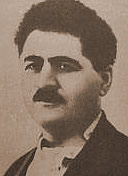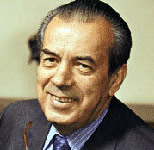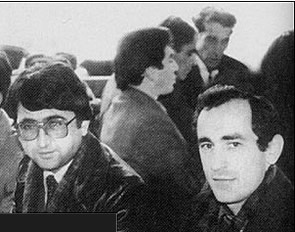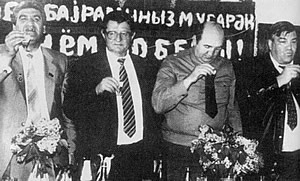History of Karabakh (part 3)
Karabakh and Nakhichevan annexed
Soon afterwards, however, the Turkish and Russian leaders were able to reach understanding upon carve-up Armenia. The year 1921 brought tragic territorial losses for Armenia. The Treaty of Moscow (March 1921), the Treaty of Kars (October 1921), and plenary sessions of the Caucasian Office of Russian Communist Party (June-July 1921) tore away historical lands from Armenia, reducing its territories thrice. With the stroke of a pen, Nakhichevan and Nagorno-Karabakh were forcibly attached to the Soviet Azerbaijan.
Autonomy formed
The Autonomous Region of Nagorno-Karabakh was formed on July 7, 1923. The map of the historical Artsakh was then systematically redrawn and some of its parts were cut off and included in the neighboring regions of the Azerbaijan Republic. For example, Gulistan became Shahumian region, Guetashen and Martunashen went to Khanlar region, and the Dadivank monastery found itself beyond the formal borders of Artsakh. Moreover, the Soviet power intentionally annexed and attached to Azerbaijan what are now Kaelbajar and Lachin regions, and so Karabakh was entirely cut off from Armenia, and became an enclave.
“History of Azerbaijan” created
During the decades of Soviet rule, the Armenians of Artsakh repeatedly protested against the policy of barefaced discrimination and persecutions. Planning to change the ethnic structure of population, the government of Azerbaijan tried all ways to impede economic development of the region, and also pursued severe discrimination in cultural realm. Many Armenian schools and establishments ceased to exist, and the Armenian newspapers and periodicals were shut down. Out of more than 200 active Armenian churches no one was allowed to function. At the same time, both of the two mosques built in Shushi in the late 19th century functioned freely.
From 1936, a new concept of “Azerbaijanis” or “Azeris” was brought into general use in the Soviet Union. Before that, what is now Azeri was simply called Turk or Caucasian Tatar. Stalin ordered the Soviet historians to create the “history of Azerbaijan”. As a result, many of the Armenian cultural-historical monuments in Karabakh were later destroyed or declared belonging to the Azerbaijani heritage.
Armenian protests
 Aghassi Khanjan, leader of Soviet Armenia, was arrested and killed during an interrogation.
Aghassi Khanjan, leader of Soviet Armenia, was arrested and killed during an interrogation.
Aghasi Khanjian, leader of Communist Party of Armenia tried to raise the Armenian grievances before Stalin. He was arrested and executed in 1936. Then a campaign of purges launched by Stalin swept hundreds of local leaders and activists in Artsakh.
In 1945, Arutiunov, Secretary of Communist Party of Armenia wrote a letter to Stalin, asking for reunification of Artsakh with Armenia, but without result.
The next wave of mass protestations in 1965-1967 was suppressed by Azerbaijani government. Hundreds of Armenian activists were arrested on charges of nationalism and some of them died in prisons. Despite the promises, the Soviet government shelved the issue for an indefinite time. In 1975, Kochynian, leader of Soviet Armenia was made scapegoat and removed from his post. The protest demonstrations continued under the next Armenian leader Karen Demirchyan.
Perestroika
By 1986-1987, the economic and cultural oppression against the Armenians of Nagorno-Karabakh culminated, making their life conditions intolerable. The declarations made by Gorbachev about the democratization of Soviet society, inspired the Armenians. During the entire year of 1987, mass demonstrations and public rallies took place throughout Artsakh. Over 80 000 residents of Artsakh signed a petition demanding the reunification with Armenia. In February 1988, the deputies of Nagorno-Karabakh adopted a document to the parliaments of Azerbaijan and Armenia. At the same time, an unprecedented movement of support began in Armenia. The general strikes, marches and meetings paralyzed the life in both Armenia and Artsakh. The Armenian Diaspora throughout the world enthusiastically supported the people of Artsakh as well.
Beginning of violence
 Soviet troops in Stepanakert, 1988
Soviet troops in Stepanakert, 1988
However, both Soviet and Azerbaijani governments firmly opposed to the idea of reunification of Armenia and Artsakh. The Soviet functionaries openly blackmailed the Armenian officials and community leaders, making it clear that the large Armenian population in Azerbaijan might become target of future irregularities.
On February 22, 1988 Azeri mobs marched from Aghdam to Stepanakert to punish the Armenians. The bloodshed was prevented that time. Yet 6 days later, the unparalleled bloody riots took place in the city of Sumgayit, near Baku. During the 3 days of bloodthirsty pogroms, dozens of innocent Armenians were killed, injured and raped while their apartments were ransacked and set to fire. The Soviet Army intervened on the forth day, and restored order.
Special Administrations in Artsakh
 Arkady Volsky On June 18, 1988 a session of Supreme Council of USSR convened in Moscow to solve the Nagorno-Karabakh issue. Following the decision of Gorbachev, a special administration directly subordinate to Moscow was set in Stepanakert, under Arkady Volsky. However, the situation even worsened, as Azerbaijan established a severe blockade of Armenia and Artsakh. The region was isolated from the rest of the world, and the Armenian population was on the verge of starvation.
Arkady Volsky On June 18, 1988 a session of Supreme Council of USSR convened in Moscow to solve the Nagorno-Karabakh issue. Following the decision of Gorbachev, a special administration directly subordinate to Moscow was set in Stepanakert, under Arkady Volsky. However, the situation even worsened, as Azerbaijan established a severe blockade of Armenia and Artsakh. The region was isolated from the rest of the world, and the Armenian population was on the verge of starvation.
In November of 1989, Gorbachev canceled the special administration and formed the Organizational Committee of Nagorno-Karabakh. In fact, the new ukase returned the region under the Azeri jurisdiction. In response to that, a joint session of deputies of Armenia and Artsakh adopted a document proclaiming the reunification of Armenia and Artsakh.
Azeri atrocities in Baku and Karabakh
In the January of 1990, hundreds of Armenians in Baku fell victims in the barbaric pogroms, inspired by the extremists from the Popular Front of Azerbaijan. The extreme nationalistic forces in fact seized the power in Azerbaijan, making “Kill the Armenian” and “Cleanse Karabakh of the Armenians” their main banners.
Soon thereafter, the armed confrontation began in the Armenian populated Shahumian and Khanlar regions, and along the Armenian-Azeri border. In October 1990, the Azeri militia blockaded the airport in Stepanakert suburb of Hodjallu, which definitely isolated Artsakh from Armenia.
In April 1991, the special Azeri and Soviet militia detachment forces began the so-called “Circle” operation. First, the population of Guetashen and Martunashen villages of Khanlar region was deported, then the punitive raids continued in the Shahumian, Hadrout and Shushi regions. These actions conducted by Azerbaijani and Soviet State organs resulted in the depopulation of 24 Armenian villages. During the purges hundreds of Armenians were arrested and killed.










